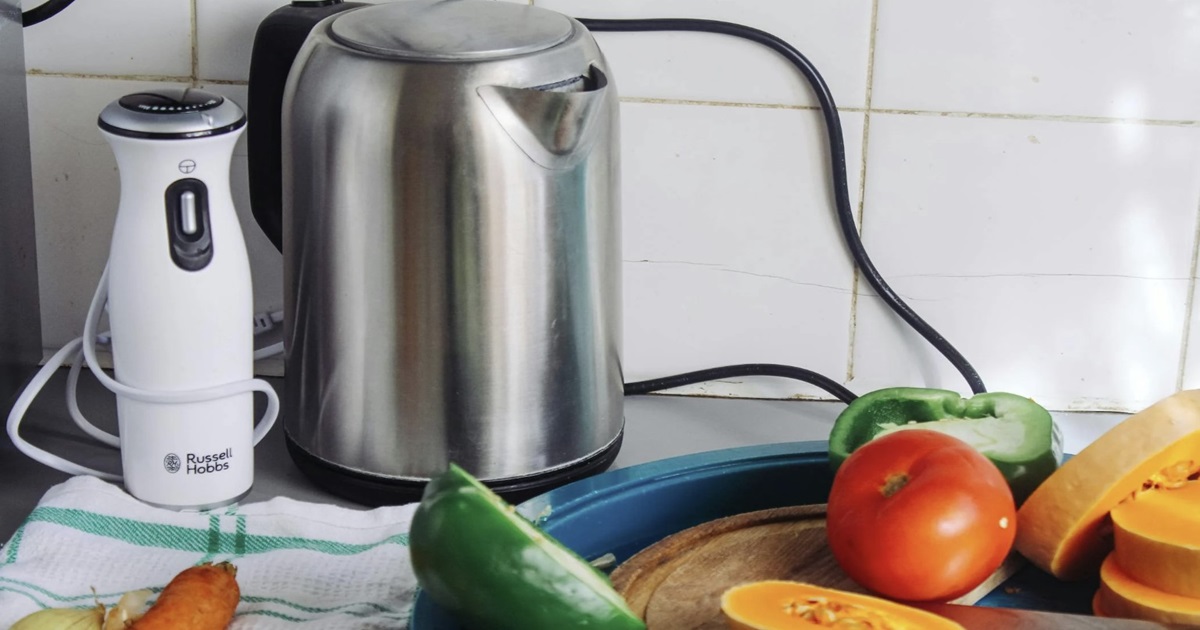Easy Step-by-Step Guide to Cleaning Your Electric Kettle

source: Pexels
I’m too embarrassed to confess that it’s been weeks since I cleaned my electric kettle. Between running around with the kids and juggling work deadlines, finding time for chores like this has been a challenge. And, being a single mom, if I don’t do it, who will? It doesn’t help that my kettle is white, making every little spot of dirt stand out. Most of the time, a quick wipe with a damp cloth is all it gets from me. But, as I’ve learned the hard way, that’s hardly enough to keep it really clean.

With a bit of trial and error, and a few visits to too many websites to count, I’ve discovered a few methods that work wonders for cleaning electric kettles – and trust me, you don’t want a dirty kettle to be the first thing guests notice in your kitchen. It just doesn’t inspire confidence in your tea-making abilities. There was this one time I visited my neighbor, and she offered me tea. The moment I caught a glimpse of her kettle, which looked like it hadn’t seen a sponge in months, I could barely swallow a sip. I couldn’t help but feel uncomfortable…

When it comes to cleaning an electric kettle, there are a few methods that truly shine, especially for tackling the dreaded limescale that can build up over time. Limescale, for those fortunate enough to not know, is that nasty, crusty white buildup you see inside kettles after they’ve been used for a while. It’s mostly harmless, but it can start to affect the taste of your water – and by extension, your coffee or tea.

The Vinegar Solution
One of the best, and my personal favorite, ways to tackle limescale is using good old white vinegar. Here’s how you do it:
- Fill your kettle about halfway with an equal parts mixture of water and white vinegar.
- Bring the mixture to a boil, then unplug the kettle and let it sit for at least 30 minutes (or up to an hour if you’ve got some serious buildup).
- Pour out the mixture and rinse the kettle thoroughly. I usually rinse it several times to make sure there’s no lingering vinegar taste.
- Boil a pot of plain water in the kettle and then discard to remove any remaining vinegar residue.

This method proved to be a game-changer the first time I tried it. My kettle had this stubborn layer of limescale that I had ignored for far too long. Seeing it dissolve away with such ease was nothing short of a miracle. It reminded me of the time I accidentally left a potted plant on a white rug for too long. Just as I thought the stain would never come out, a simple homemade solution did the trick. It’s funny how sometimes, the simplest solutions are the most effective.
Baking Soda Method
If the thought of your kettle smelling like a salad dressing doesn’t appeal to you, baking soda offers a less pungent alternative.
- Fill the kettle with water and add a teaspoon of baking soda.
- Boil the mixture and allow it to sit for an hour.
- Rinse the kettle thoroughly to ensure no baking soda taste remains.

The first time I switched to baking soda, it was because I’d run out of vinegar. I was skeptical but pleasantly surprised by the results. Plus, it didn’t leave a strong smell behind, which was a bonus. This incident reminded me of when I discovered baking soda could also clean jewelry. It’s the multipurpose hero we all need in our homes.
Lemon Power
Lemon not only makes a delightful addition to water but also acts as a natural descaler for your kettle due to its acidic properties.
- Fill the kettle with water and add a few slices of lemon or a couple of tablespoons of lemon juice.
- Boil the water, and then turn off the kettle, letting it sit for an hour with the lemon water inside.
- Rinse and boil clear water to remove any lemony taste.

Lemons have always been a staple in my kitchen for their versatility. I remember using lemon to lighten my hair as a teenager, sitting in the sun with lemon juice in my hair, hoping for natural highlights. Now, I’m using it to clean my kettle. Who knew?
How Often Should You Clean?
The frequency of cleaning depends largely on your usage and the hardness of your water. If you’re using it daily, a thorough clean every other month is a good rule of thumb. However, if you’re in an area with hard water, you might want to descale your kettle as often as once a month.

Keeping your electric kettle clean isn’t just about appearances; it’s about health and safety, too. Regular cleaning prevents mineral buildup which can affect your kettle’s performance and the taste of your water. Plus, it gives you that little burst of satisfaction knowing that your kitchen appliances are as ready to perform as you are. No more embarrassing moments when a guest asks for a cup of tea!
There’s a unique sense of accomplishment that comes from tackling these small but essential tasks. It’s akin to the feeling I get when I manage to fix a leaky faucet or unclog a drain by myself – a reminder that, in between the chaos of work and family life, taking the time to care for the things that serve us daily is not just necessary; it’s rewarding. And so, armed with vinegar, baking soda, and lemons, I’m ready to face my kitchen challenges head-on, one clean kettle at a time.